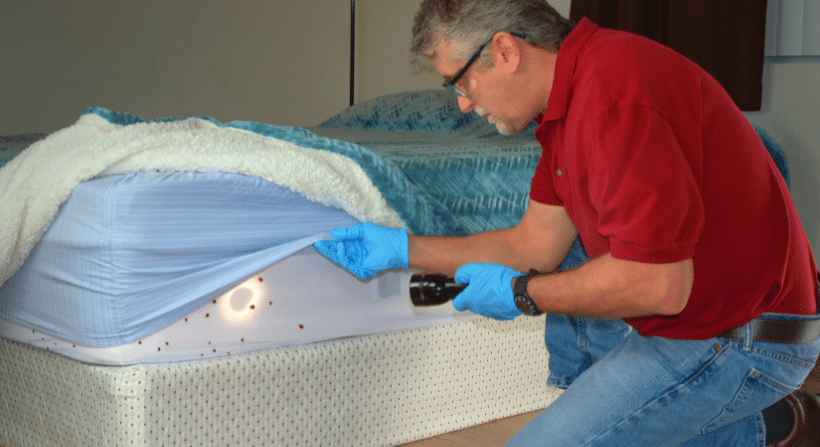The battle against bed bugs is one that many homeowners are familiar with. These tiny pests can wreak havoc on your home, causing discomfort and frustration. One common method used to prevent and manage bed bug infestations is the use of mattress encasements. But do mattress encasements really prevent bed bugs? In this comprehensive guide, we’ll explore the effectiveness of mattress encasements in preventing bed bug infestations.

From understanding how they work to their pros and cons, we’ll provide you with all the information you need to make an informed decision about using mattress encasements in your home.
Understanding Mattress Encasements:
Mattress encasements, also known as mattress covers or mattress protectors, are specially designed covers that encase your mattress and box spring, creating a barrier between you and potential bed bugs. These covers are typically made of tightly woven fabric or plastic that is impermeable to bed bugs and their eggs, preventing them from entering or escaping the mattress. Mattress encasements come in various sizes to fit different mattress types and are usually equipped with a zipper closure to seal the mattress inside completely.
How Encasements Work:
The primary purpose of mattress encasements is to trap any bed bugs that may be present inside your mattress and prevent new infestations from occurring. When properly installed, encasements create a protective barrier that bed bugs cannot penetrate, effectively isolating them and preventing them from feeding or reproducing. Additionally, mattress encasements make it easier to detect and monitor bed bug activity, as any bed bugs trapped inside will eventually die without access to a blood meal.
Pros of Using Mattress Encasements:
1. Prevention of Infestations: Mattress encasements can effectively prevent bed bugs from infesting your mattress and box spring, providing you with peace of mind and protecting your investment in your bedding.
2. Easy to Install and Maintain: Encasements are easy to install and require minimal maintenance. Simply zip them up and periodically check for any signs of damage or wear.
3. Allergy Relief: In addition to preventing bed bugs, encasements can also help alleviate allergy symptoms by creating a barrier against dust mites, pet dander, and other allergens.
Cons of Using Mattress Encasements:
1. Initial Cost: High-quality encasements can be expensive, especially if you have multiple mattresses to cover. However, the long-term benefits may outweigh the initial investment.
2. Limited Effectiveness: While encasements can prevent bed bugs from infesting your mattress, they may not eliminate an existing infestation elsewhere in your home. It’s essential to use mattress encasements in conjunction with other bed bug control methods for maximum effectiveness.
3. Comfort: Some people find that encasements can affect the comfort and breathability of their mattress, especially if they are made of plastic or vinyl materials. However, many newer encasements are designed to be breathable and comfortable to sleep on.
Also Read: 3 Steps to Get Rid of Bed Bugs Yourself ?
Conclusion:
In conclusion, encasements can be an effective tool in preventing bed bug infestations and protecting your mattress and box spring. By creating a barrier that bed bugs cannot penetrate, encasements can help you sleep soundly knowing that your bedding is safe from these pesky pests. However, it’s essential to understand that encasements are not a cure-all solution for bed bugs and should be used in conjunction with other bed bug control methods for maximum effectiveness.
If you’re struggling with a bed bug infestation in your home, contact Tulsa Bed Bug Exterminator for professional assistance. Our experienced team can help you eliminate bed bugs and restore peace to your home. Schedule your consultation today and say goodbye to bed bugs for good. Our experienced team can help you choose the right mattress encasements for your needs and provide professional installation services.

Recent Comments